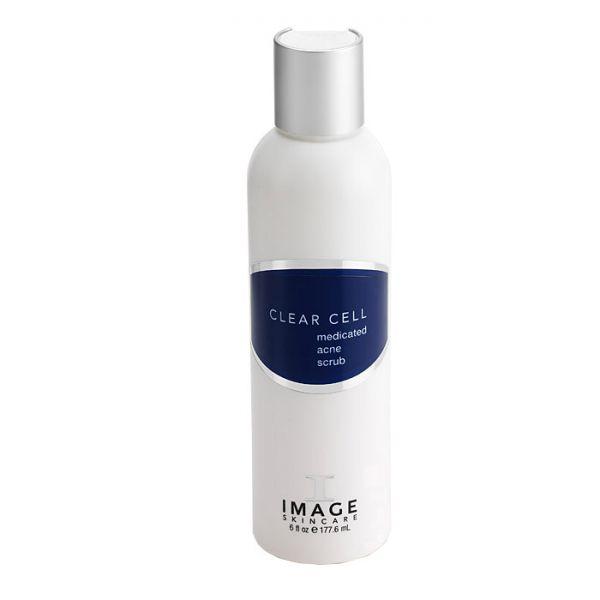
An ingrown hair is actually a hair that curls back on itself and ,while ingrown hair is more common with people having curly hair, almost everybody will get one at some time, and if you shave or wax regularly, you may have to deal with ingrown hairs quite frequently.

Follow these instructions to get rid of them, and keep them from coming back.
Exfoliating method
Exfoliate the area. Twice a day, scrub the ingrown hair gently. This will help to remove any dead skin cells, dirt, and oils that might be trapping the ingrown hair. It may also physically nudge the tip of the hair out of your skin. Try to hit the ingrown hair from a variety of directions. Use an exfoliating glove, or try one of the following exfoliating techniques:
Exfoliate using Tylenol
Exfoliate your legs with a salt scrub

Exfoliate your skin with olive oil and sugar. Be gentle. You'll need to exfoliate enough to achieve this effect, but not so much that the area surrounding the ingrown hair starts to bleed.
When in doubt, exfoliate more gently but for a longer period of time.
It's very difficult to remove an ingrown hair from under a scab. In this case, it might be best to use a different method, or consult your doctor.
Acne medication method

I recommend Image Skincare's Medicated Acne Scrub and Medicated Acne Masque.
Apply a dab of acne medication, (Benzol Peroxide). Ingrown hairs are pretty similar to pimples, especially when the ingrown hair is accompanied by pus. Apply benzoyl peroxide or salicylic acid several times a day for a few days. This, combined with daily exfoliation, is often enough to remove the ingrown hair, since swelling will be reduced, giving the hair more room to grow out (rather than in). If you don't have acne medication on hand, you can try using a dab of toothpaste.
Compress method

Apply a warm, moist compress to the area for a few minutes. This will soften the skin.
Just wet a washcloth with hot water, wring it out, and press it against the ingrown hair. When the washcloth cools down, run it under hot water again.
If you can see the ingrown hair embedded in the skin, this treatment will soften the hair and bring it closer to the surface. If you can't initially see the hair, leave the warm compress on until it rises to the skin's surface.
If you apply the compress for ten minutes and you still can't see any sign of hair, you're not going to be able to remove it yourself, or it might be something else altogether.
Sharp device method

Use a sterile needle or tweezers to gently tease the hair out of the skin. Use the warm compress first, this should bring the hair to the surface, don't dig for the hair if you can't easily get at it. Don't pluck the hair out completely if you can avoid doing so; just make sure that the ingrown end is out of the skin. It may take a little time to coax the hair out, so persevere and and do not cut the skin.
Sometimes you'll see a loop of the hair close to the surface of the skin. This means that the tip of the hair has begun growing down into the skin. If you get a needle in the loop and tug lightly, the end will often come loose.
If you choose to use tweezers, remember that tweezers can be bought either pointy or flat-tipped. A pointy-tipped pair may cause less damage to the skin around the hair if used carefully. Another choice might be to use a rotable medical device for ingrown hairs which does not damage the follicle or the surrounding skin.
Wash the area around the (formerly) ingrown hair with warm water. Apply an antiseptic to provide extra protection against infection. Avoid wearing tight clothing on that area, and exfoliate regularly to prevent new ingrown hairs. You may wish to apply a daily topical solution to prevent any further ingrown hairs from developing.

Sometimes, the ingrown hairs may not budge at all due to the fact that they may be placed in very deep. If these methods do not work, talk to your doctor or dermatologist to get a prescription medication.
TIPS
Always use a fresh blade when shaving the very sensitive areas, like your bikini line.
If you can't see the hair initially, leave the warm, moist compress in place for a while longer.
If it burns or has reddish bumps after, use a moisturising cream to spot away redness.
Make sure to keep the area very clean. Washing the specific area very thoroughly every time you take a shower will help.
Always make sure you keep the area you are about to shave wet or moist, never apply soap or foam to a dry area.
Always make sure razor is clean before use. Invest in a good quality shaving cream too, as some kinds even say they prevent ingrown hairs.
Try not to squeeze the ingrown hair as this can either damage the skin, making it raw or break through the skin, which can get it infected and/or harder to heal.
You can (almost) sterilise your tools by boiling in water or by cleaning with alcohol (contrary to popular belief, alcohol does not kill everything under the sun, but is better than leaving the tool untreated).

Having a dense growth of pubic hair I face difficulty in shaving it off. However I managed to procure help from an article I read about How to shave pube hair. It directed me with steps to go about trimming different sizes of pubic hair.
ReplyDeleteHow to shave pube hair